Book Review – When the Sky was Blue: The Inside Story of Coventry City’s Premier League Years by Rich Chamberlain
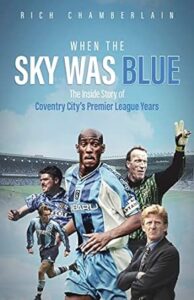 In the 1966/67 season Coventry City, then managed by Jimmy Hill, reached the top flight of the Football League for the first time in their history after winning the Second Division title, finishing a point ahead of Wolves. The Sky Blues stayed for 34 years amongst the English games elite and would be founder members of the inaugural Premier League in 1992/93. And that initial season of ‘a whole new ball game’ is the starting point for Coventry fan Rich Chamberlain’s look at the West Midlands Club time in the Premier League.
In the 1966/67 season Coventry City, then managed by Jimmy Hill, reached the top flight of the Football League for the first time in their history after winning the Second Division title, finishing a point ahead of Wolves. The Sky Blues stayed for 34 years amongst the English games elite and would be founder members of the inaugural Premier League in 1992/93. And that initial season of ‘a whole new ball game’ is the starting point for Coventry fan Rich Chamberlain’s look at the West Midlands Club time in the Premier League.
The book benefits from extensive interview with ex-players and management, so isn’t just a season by season trawl through every result. Rather, Chamberlain takes each manager’s reign as the focal point, with the interviews providing an honest and balanced assessment of the strengths and weaknesses of the various men who sat in the Highfield Road hotseat and some of the high-profile players who pulled on the sky blue shirt.
In the Premier League years (1992 to 2001), The Sky Blues had four managers, Bobby Gould (for a second stint having managed the Club in the early ‘80s), Phil Neal, Ron Atkinson and Gordon Strachan. Strachan’s stint was the longest, managing more games than the other three combined. What is evident is that all four had very different approaches to the job.
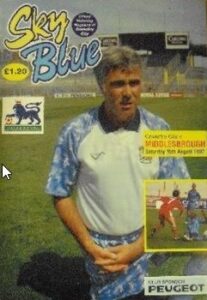
Leading Coventry into the Premier League era was Bobby Gould who the author describes as “unorthodox”, a man known for using his contacts to seek out gems from the lower leagues, but who bled “sky-blue blood.” Gould not only managed the Club on two occasions, but also played for The Sky Blues, scoring 40 goals in 82 games before moving to Arsenal.
Gould resigned in December 1983 with Phil Neal taking permanent charge after initially being appointed as caretaker. Whilst some players took to the ex-Liverpool player, many others didn’t with Chamberlain observing, “no doubt in part due to him (Neal) being a far less charismatic frontman than Gould” with ex-player Micky Quinn adding, “Phil was a very good coach but as a manager it’s about making decision, team selections. I don’t think he was a very good manager.” For all that Neal led Coventry to 11th at the end of the 1993/94 campaign – their highest finish in the Premier League. 1994/95 started well, but an eleven game run without a win from the end of November saw Neal sacked as The Sky Blues dropped in the relegation zone, with home gates dropping to around 12,000.
Incredibly after the dour Neal, came the larger-than-life character that was Ron Atkinson walking through the Highfield Road gates. Not only did his presence get fans flocking back to the terraces, but also as ex-Coventry player David Burrows highlighted, “He (Atkinson) attracted higher-profile players. Players didn’t go to Coventry for the money. Most of the players…took a pay cut to play for Ron.” Big Ron brought the razzamatazz and with it national media coverage. Despite all this Coventry were in a relegation dogfight, but a signing that would have a long-term impact on the Club came in March 1995 as Gordon Strachan moved from Leeds United as player and assistant manager. Not only did the Scot’s influence ensure Coventry stayed up but showed his attributes as a talented tactical coach.
Having preserved their Premier League status in 1994/95, hopes were high that 1995/96 campaign under the Atkinson/Strachan combo would not be another one of battling against the drop. However, it was to be another difficult season with their top-flight status only assured after a nervous final day eventually surviving on goal difference.
In November 1996, the Atkinson era ended, but as the author explains it wasn’t quite as simple as that. “The original story was that he (Atkinson) had agreed to move into a director-of-football-style role while Strachan took over as manager. However…not all the boardroom were on the same page with the story.” Ex-Chairman Bryan Richardson hoped that with Atkinson’s father very ill, the manager could be moved upstairs without a loss of face. The decision was somehow leaked and seemingly Big Ron was the last to know. Indeed Atkinson reflected that an incident with board member Geoffrey Robinson was behind it, “the week after I was moved upstairs. There was no directive at all, I didn’t have any directives from the Club.”

Strachan would preside over the Club from 1996 until 2001 as be battled season-on-season to maintain Coventry’s top flight status. Chamberlain says of the Scots era, “He (Strachan) took with him a relegation on his CV that undoubtedly tarnishes his Coventry legacy, despite having been at the helm for some of the most exciting football the club had ever seen.” This was seen in players such as Darren Huckerby, Dion Dublin, Noel Whelan, Youssef Chippo, Mustapha Hadji, Robbie Keane, Gary McAllister and Craig Bellamy, all pulling on the sky blue jersey.
If fans thought back in 2001 that relegation was a minor blip, nothing prepared them for the years since which saw the Club sink to new lows. 2011/12 saw The Sky Blues relegated to League One and worse was to follow as in 2016/17 as they fell through the trapdoor into the basement division of the Football League. Off the pitch their beloved Highfield Road ground was left with residence at the then named Ricoh Arena in the 2005/06 campaign. This proved to be no smooth path, with major financial problems besetting the club, they found themselves having to play seasons at Northampton Town (2013/14) and Birmingham City (2019 to 21). Thankfully The Sky Blues have recovered in recent years, with a return to the Championship and residence back at the Coventry Building Society.
Coventry fans will hope that a return to the top flight is not too far away, but for now will have to make do with memories wonderfully recounted within Chamberlain’s book.
(Publisher: Pitch Publishing Ltd. August 2023, Hardcover: 224 pages)
Buy the book here: When the Sky was Blue
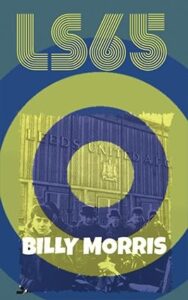 LS65 Review
LS65 Review In Bournemouth 90 the football storyline was one of a pivotal moment as Leeds United regained their top division status, leading to them becoming Champions of England once more in 1991/92. In LS65 the football backdrop is once again an important moment in the Club’s history, with the Elland Road team, after only having been promoted the season before, missing out on the First Division title on goal average and then losing in the FA Cup Final 2-1 to Liverpool. However, despite those disappointments in 1965 it was the start of what was to be a Golden Era under Don Revie as Leeds United became one of the best sides in England and Europe.
In Bournemouth 90 the football storyline was one of a pivotal moment as Leeds United regained their top division status, leading to them becoming Champions of England once more in 1991/92. In LS65 the football backdrop is once again an important moment in the Club’s history, with the Elland Road team, after only having been promoted the season before, missing out on the First Division title on goal average and then losing in the FA Cup Final 2-1 to Liverpool. However, despite those disappointments in 1965 it was the start of what was to be a Golden Era under Don Revie as Leeds United became one of the best sides in England and Europe.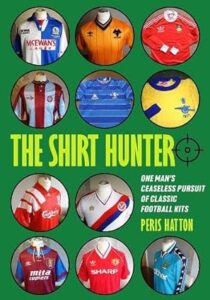 When I was first standing on the terraces of my beloved Fulham as a child, replica kits just weren’t a thing, but all this changed when Admiral came on the scene in the 1970s. With their bold designs and colours Admiral were the pioneers that led to the creation of the multi-million pound business in football kits that exists today.
When I was first standing on the terraces of my beloved Fulham as a child, replica kits just weren’t a thing, but all this changed when Admiral came on the scene in the 1970s. With their bold designs and colours Admiral were the pioneers that led to the creation of the multi-million pound business in football kits that exists today.
 Football Shorts are a series of books created in a collaboration between award-winning journalist and author Ian Ridley’s own publishing company Floodlit Dreams and renowned sports book publisher, Pitch Publishing. Ridley details in the Notes and Acknowledgments of the first in the series, Pantomime Hero: Memories of the Man Who Lifted Leeds United After Brian Clough, that the inspiration came about during lockdown and his desire for a short sporting read.
Football Shorts are a series of books created in a collaboration between award-winning journalist and author Ian Ridley’s own publishing company Floodlit Dreams and renowned sports book publisher, Pitch Publishing. Ridley details in the Notes and Acknowledgments of the first in the series, Pantomime Hero: Memories of the Man Who Lifted Leeds United After Brian Clough, that the inspiration came about during lockdown and his desire for a short sporting read.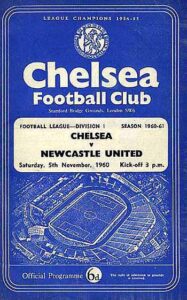 The (first) match back in 1960 was the first game I ever saw. I was six and a half years old and I watched from the terraces in a state of all-consuming, heart-thumping, knee-jiggling, bladder-squeezing excitement and wonder.
The (first) match back in 1960 was the first game I ever saw. I was six and a half years old and I watched from the terraces in a state of all-consuming, heart-thumping, knee-jiggling, bladder-squeezing excitement and wonder. Growing up in the 1970s the I-Spy books were something I collected. They covered all sorts of topics from the sights of London, various forms of transport, nature and science, to sports including football. The purpose was to spot the various objects listed within the book so ticking them off. In today’s high-tech, digital age, this concept wouldn’t excite many youngsters, but back then it passed as something both entertaining and educational.
Growing up in the 1970s the I-Spy books were something I collected. They covered all sorts of topics from the sights of London, various forms of transport, nature and science, to sports including football. The purpose was to spot the various objects listed within the book so ticking them off. In today’s high-tech, digital age, this concept wouldn’t excite many youngsters, but back then it passed as something both entertaining and educational. I once went to see a show at the Edinburgh Festival Fringe – where else would you get this quality of entertainment, nobody ever asked ever – where a guy told us the tale of how he got his Guinness World Record back – for managing to visit all of the London Underground stations in the shortest time. He spared us many of the gory details, but I was reminded obliquely of this when I started reading Scotland 42, England 1 by Mark Winter. Doing the 42, is a test which many have undertaken that means you must visit all 42 grounds in the Scottish Professional Football League. Having read this, it requires less gory detail and much patience – and some degree of financial investment. That would be true if you were living in Scotland when attempting it but Mark lives and works in Dover! No wonder it took him eight years – though he did manage to fit a wee pandemic in, in the middle of it. So fair play.
I once went to see a show at the Edinburgh Festival Fringe – where else would you get this quality of entertainment, nobody ever asked ever – where a guy told us the tale of how he got his Guinness World Record back – for managing to visit all of the London Underground stations in the shortest time. He spared us many of the gory details, but I was reminded obliquely of this when I started reading Scotland 42, England 1 by Mark Winter. Doing the 42, is a test which many have undertaken that means you must visit all 42 grounds in the Scottish Professional Football League. Having read this, it requires less gory detail and much patience – and some degree of financial investment. That would be true if you were living in Scotland when attempting it but Mark lives and works in Dover! No wonder it took him eight years – though he did manage to fit a wee pandemic in, in the middle of it. So fair play.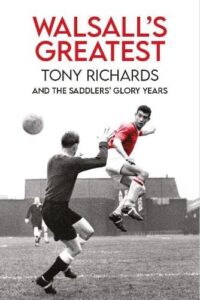 The English football pyramid top four divisions is made up of 92 clubs, however, the way that the modern media goes on you’d think that the 20 Premier League clubs are the only ones that exist. Football history in true Orwellian 1984 style has been rewritten so that all that before 1992/93 has miraculously disappeared and is never spoken about.
The English football pyramid top four divisions is made up of 92 clubs, however, the way that the modern media goes on you’d think that the 20 Premier League clubs are the only ones that exist. Football history in true Orwellian 1984 style has been rewritten so that all that before 1992/93 has miraculously disappeared and is never spoken about.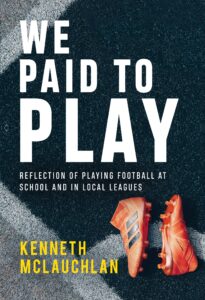 The synopsis on the back of the book informs potential readers that We Paid to Play: Reflection of playing football at school and local leagues, is both an “interesting…educated” and “fascinating read”. And if you make claims like that then you need to deliver.
The synopsis on the back of the book informs potential readers that We Paid to Play: Reflection of playing football at school and local leagues, is both an “interesting…educated” and “fascinating read”. And if you make claims like that then you need to deliver. What makes a great football captain? Is it the best player in the team or the most consistent? The loudest voice or the best communicator? Someone who plays with their heart or their head? The person who leads by example on the pitch or off it? In truth, ideally it is a combination of all of these things, and more besides. Names like Tony Adams, Roy Keane, Wes Morgan, Vincent Kompany and Steven Gerrard often feature in discussions of the Premier League’s greatest captains. These are players who not only won trophies for their clubs but also led their teams physically and emotionally – they became, in a way, extensions of the badge. Tony Adams was Arsenal, Roy Keane was Manchester United, Wes Morgan was Leicester City. They were the figureheads for their clubs, undoubted leaders on the pitch with personas that matched. Each had his own style, his own challenges to face and each left an enviable footballing legacy. These are big boots to fill, but arguably Jordan Henderson has not only filled these boots but made them even bigger.
What makes a great football captain? Is it the best player in the team or the most consistent? The loudest voice or the best communicator? Someone who plays with their heart or their head? The person who leads by example on the pitch or off it? In truth, ideally it is a combination of all of these things, and more besides. Names like Tony Adams, Roy Keane, Wes Morgan, Vincent Kompany and Steven Gerrard often feature in discussions of the Premier League’s greatest captains. These are players who not only won trophies for their clubs but also led their teams physically and emotionally – they became, in a way, extensions of the badge. Tony Adams was Arsenal, Roy Keane was Manchester United, Wes Morgan was Leicester City. They were the figureheads for their clubs, undoubted leaders on the pitch with personas that matched. Each had his own style, his own challenges to face and each left an enviable footballing legacy. These are big boots to fill, but arguably Jordan Henderson has not only filled these boots but made them even bigger. Old school.
Old school.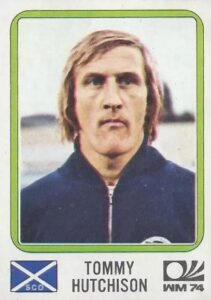 Hutch’s transfer to Coventry City and elevation to the First Division meant he was in the shop window for the Scottish selectors. That is when I, as a young spectator became aware of him – the 1974 World Cup. It was the first World Cup of which I was aware. Scotland’s manager, Willie Ormond has always been cast as the gentile figure, not seen by many as a giant of the Scottish game despite being the only Scottish manager to get us to a World Cup and come home unbeaten – although still, by Tommy Docherty’s standards, home before the postcards. I read these chapters with great interest. The names around Hutch’s debut are legends themselves, McGrain, Dalglish, Jordan, Hay, the Lawman… But it is the detail both of the campaign to get to the World Cup and whilst they were there that was of huge interest. Penny pinching blazers who put an international squad up in a halls of residence for a World Cup final friendly, cockeyed commercial deals, a wholly forgettable World Cup song, and being unable to deal with recalcitrant rowers as well as one man who saw his stature greater than his height – Billy Bremner – are all included, and I devoured them with eyes wide open.
Hutch’s transfer to Coventry City and elevation to the First Division meant he was in the shop window for the Scottish selectors. That is when I, as a young spectator became aware of him – the 1974 World Cup. It was the first World Cup of which I was aware. Scotland’s manager, Willie Ormond has always been cast as the gentile figure, not seen by many as a giant of the Scottish game despite being the only Scottish manager to get us to a World Cup and come home unbeaten – although still, by Tommy Docherty’s standards, home before the postcards. I read these chapters with great interest. The names around Hutch’s debut are legends themselves, McGrain, Dalglish, Jordan, Hay, the Lawman… But it is the detail both of the campaign to get to the World Cup and whilst they were there that was of huge interest. Penny pinching blazers who put an international squad up in a halls of residence for a World Cup final friendly, cockeyed commercial deals, a wholly forgettable World Cup song, and being unable to deal with recalcitrant rowers as well as one man who saw his stature greater than his height – Billy Bremner – are all included, and I devoured them with eyes wide open.